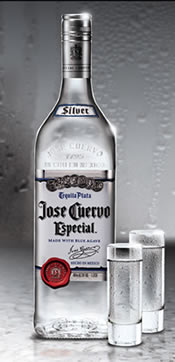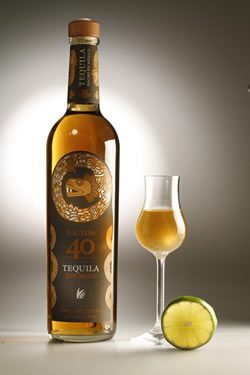Difference between Tequila Gold and Silver
Key difference: Tequila is a distilled spirit that is composed from the blue agave plant. Silver tequilas are bottled immediately after production or after aging in stainless steel or neutral oak barrels for up to 2 months. Gold tequila is essentially tequila that has been given a golden color through added coloring and flavoring, commonly caramel.
 Tequila is a distilled spirit that is composed from the blue agave plant. The blue agave plant grows primarily around the city of Tequila, Mexico. Hence, most tequila distilleries are located in the surrounding area. According to Mexican Law, tequila can be produced only in the state of Jalisco and limited regions in the states of Guanajuato, Michoacán, Nayarit, and Tamaulipas. However, it can be shipped in large quantities to the United States of America to be bottled, and eventually sold.
Tequila is a distilled spirit that is composed from the blue agave plant. The blue agave plant grows primarily around the city of Tequila, Mexico. Hence, most tequila distilleries are located in the surrounding area. According to Mexican Law, tequila can be produced only in the state of Jalisco and limited regions in the states of Guanajuato, Michoacán, Nayarit, and Tamaulipas. However, it can be shipped in large quantities to the United States of America to be bottled, and eventually sold.
Tequila was first produced in the 15th century. It generally has 38–40% alcohol content, which is 76–80 proof. Some types of tequila may be produced with an alcoholic content as low as 31% (62 proof) or as high as 55% (110 proof). However, these are uncommon.
Tequila is often drunk neat in form of shots. This is why tequila has a bad reputation for causing blackouts and hangovers. However, many of the premium tequilas are now sipped neat, in order to taste the flavor and to enjoy the liquor. Tequila may also be used to create cocktails, the most famous of which is the Margarita.
Under Mexican Law, only tequila which is 100% agave can be sold as tequila. Even so, as per American Law, tequila which is 51% agave can be commercially labeled as tequila. These types of tequila are usually called mixtos in Mexico.
There are 5 different types of tequila: Blanco (white) or plata (silver); Joven (young) or oro (gold); Reposado (rested); Añejo (aged or vintage); and Extra Añejo (extra aged or ultra aged).
Once the tequila is produced, it may be either aged in barrels or bottled directly. Silver tequilas are bottled immediately after production or after aging in stainless steel or neutral oak barrels for up to 2 months. Silver tequila can be either 100% agave or mixto.
Silver tequila is often used to do shots, or for mixing. The silver tequila is especially used for cocktails, as the mixtos have a harsh taste, which comes through most cocktails. The 100% agave silver tequila has a more natural agave taste, however it is still considered as harsh, especially when compared to aged tequila.
 Silver tequila, also known as white tequila is named so because of its appearance. It looks clear like water or vodka. Essentially, silver tequila is often considered bottom rung, especially by connoisseurs, as it has not been aged and is often harsh.
Silver tequila, also known as white tequila is named so because of its appearance. It looks clear like water or vodka. Essentially, silver tequila is often considered bottom rung, especially by connoisseurs, as it has not been aged and is often harsh.
Gold tequila is essentially tequila that has acquired a golden caramel hue. This coloring can happen via two ways. One is that it is aged in wooden barrels for more than a year. Over time, the tequila absorbs color and flavoring from the wood. However, these types of tequilas are often labeled and sold as Añejo (aged or vintage), which are aged between one to three years or extra Añejo (extra aged or ultra aged), which are aged more than three years.
The other type of gold tequila, which is more common, is essentially a silver tequila which has been given a golden color through added coloring and flavoring, commonly caramel. This type of gold tequila is rarely 100% agave, it is nearly always a mixto.
In addition of the gold color, the caramel gives the tequila a sweeter and smoother taste. This is why the gold tequila is a favorite for shots. It is often also used for cocktails, such as Frozen Margaritas, as the sweet flavor really shines through.
Image Courtesy: bentleysgrill.com, 21food.com









Add new comment